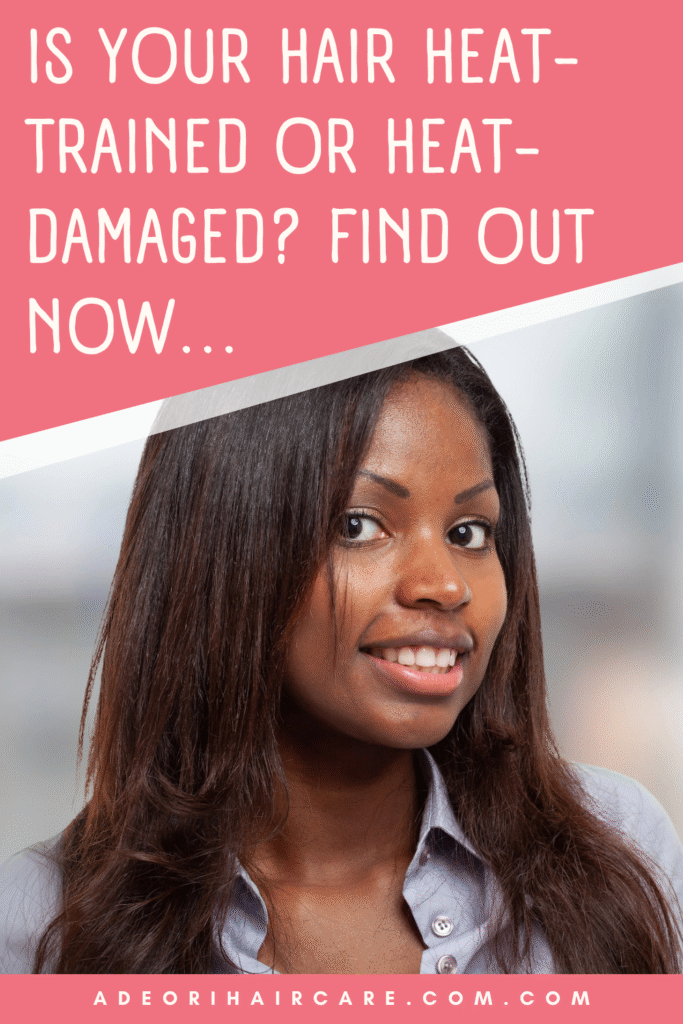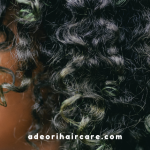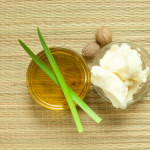In the world of natural hair, few debates are as heated (pun intended) as the one surrounding heat damage vs. heat training.
Both involve the use of heat tools like flat irons, blow dryers, and hot combs, but the outcomes and intentions behind them are very different.
Let’s break down the real difference between heat training and heat damage, how to spot the signs, and what healthy heat styling actually looks like.

What is Heat Damage?
Heat damage happens when high temperatures break down the natural protein structure of your hair (keratin).
When hair is exposed to excessive or unprotected heat, the result is often irreversible changes to your curl pattern, moisture balance, and overall health. Common signs of heat damage include:-
- Loss of natural curl pattern.
- Limp, stringy, or straight ends.
- Excessive dryness or brittleness.
- Breakage or shedding.
- Hair that no longer reverts to its natural state after washing.
Heat damage is unintentional and undesirable. It often happens after using too high heat, too often, or without proper protection.
What is Heat Training?
Heat training, on the other hand, is a purposeful and gradual process where you use moderate heat consistently to loosen your natural curl pattern over time.
It allows your hair to be more stretchable or easier to straighten while still retaining overall health.
Heat training is often used by naturals who want the flexibility to transition easily between curly and straight styles, without chemically altering their texture.
Key characteristics of heat-trained hair include:-
- Slightly loosened curl pattern.
- More manageable when straightening.
- Still retains some curl or wave.
- Less shrinkage, but not completely straight.
- Doesn’t feel brittle or broken.
Please note that heat training still involves some level of structural change, but it’s generally controlled and minimal when done properly.
Heat Damage vs. Heat Training: Key Differences
| Feature | Heat Damage | Heat Trained |
| Intent | Accidental, unintentional | Deliberate and gradual |
| Curl Reversion | Often doesn’t revert at all | Partial reversion possible |
| Hair Health | Dry, brittle, prone to breakage | Soft, manageable, retains moisture |
| Appearance | Limp, uneven texture | Looser curls, even texture |
| Control | Heat was too high or frequent | Heat is moderate and spaced out |
| Longevity | Often permanent | Can be managed or minimized |
Is Heat Training Natural Hair Safe?
Yes, but only when done carefully and sparingly. Heat training should always involve these key practices:-
- Use a heat protectant: Non-negotiable. Look for silicones or polymers that form a barrier around your strands.
- Set moderate temperatures: Stay below 375°F if possible, especially for finer or more fragile textures. I highly recommend Fhi Flat Irons.
- Avoid daily heat: Limit heat styling to once every few weeks or months.
- Deep condition regularly: Keep moisture and protein balanced.
- Trim damaged ends: Don’t let split ends travel up the hair shaft.
It’s also important to remember that any heat use carries risk, especially for tighter textures like 4B and 4C, which are naturally more fragile.
If your goal is long-term health and growth, heat should be used as a tool, not a routine.
Can Heat-Trained Hair Turn into Heat-Damaged Hair?
Absolutely. The line between the two is thin. Even when intentional, repeated heat exposure can lead to damage over time.
You may start with heat training, but end up with breakage or complete texture loss if you don’t:-
- Use the right products.
- Space out heat sessions.
- Prioritize restorative care.
Think of it this way: heat training is controlled risk. Without discipline, it quickly becomes damaged.

Alternatives to Frequent Heat Styling on Natural Hair
If you’re heat training but want to reduce how often you reach for the flat iron, consider:-
- Stretching methods like Bantu knots, African threading, or banding.
- Blow-drying with tension at cool/warm temperatures.
- Roller sets or flexi rods for a smooth, stretched finish.
- Silk wrapping to maintain straight styles longer.
These methods help you achieve stretch without risking heat overload.
Know Your Hair’s Limits
The key to healthy hair is understanding how your hair responds to heat. Not all textures tolerate heat the same way.
What works for one head of hair might cause irreversible damage to another.
Heat training is intentional, careful, and monitored. Heat damage is careless, aggressive, and often permanent.
If you’re not sure which one you’re experiencing, start by washing your hair and letting it air dry.
If your curls bounce back with definition and elasticity, you’re likely in the clear. If not, carry out a deep protein treatment with Aphogee and see if that achieves reversion.
If not, it might be time to detox, trim, and rebuild. I also recommend the 30-Day Curl Comeback Blueprint for a curl reset whenever necessary.
Your natural hair is versatile, beautiful, and resilient, and it deserves all the care you can provide.
Abi is the founder behind Ade Ori Hair Care and the Healthy Natural Hair Products ecosystem, a platform trusted by women seeking clean, effective solutions for textured hair. With over 10 years of hands-on experience, she combines research-backed insight, ingredient transparency, and natural formulations to help women nourish their curls from the inside out. She’s passionate about empowering women through DIY tools, holistic hair education, and a community-first approach. Learn more here.





